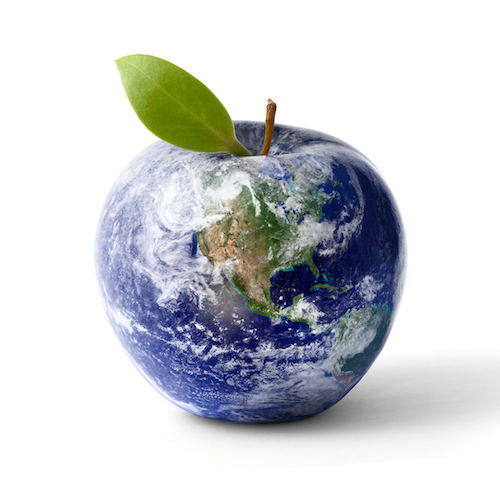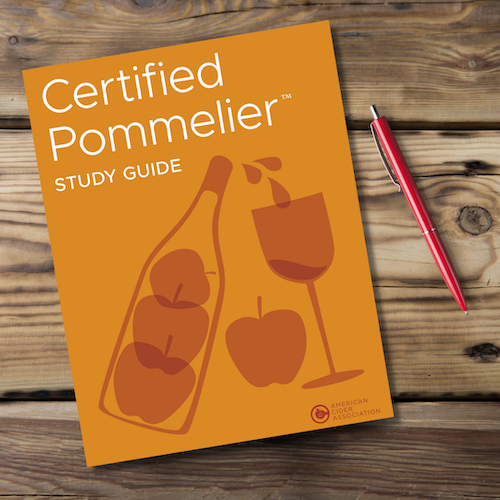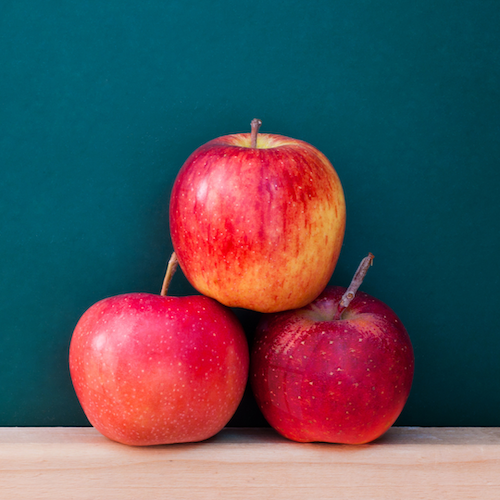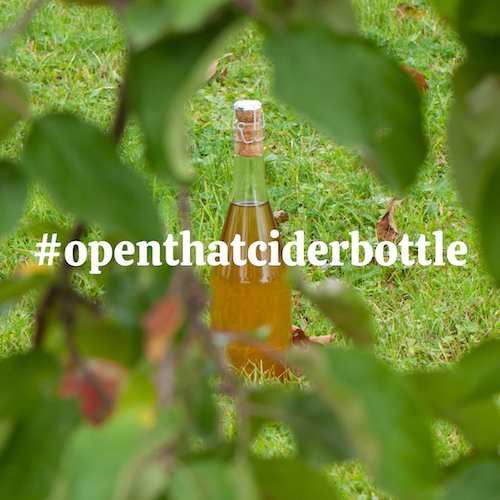Posts Tagged ‘home’
ACA Seeks Guest Country for CiderCon 2024
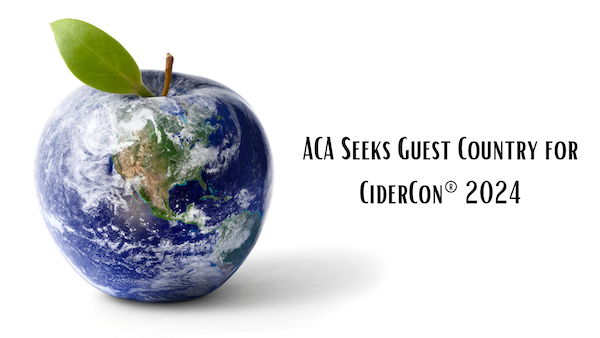
CiderCon® is one of the most robust, diverse, thorough and connected professional cider conference in the world. We pride ourselves on being a host to international attendees year after year. The 14th annual CiderCon® will take place in beautiful Portland, Oregon from January 16-19, 2024. We expect well over 1,000 people to attend. We are requesting proposals from other countries to send a diverse representation of their regional cidermaking community to be featured guests of honor at CiderCon® 2024. Previously featured countries are Spain, France, UK, Canada, New Zealand and Ireland. Guests from these countries continue to attend future CiderCons because of the quality programming and because CiderCon® is an exchange of ideas, understanding and knowledge that enriches the global cider community.
Costs: The American Cider Association will waive CiderCon® registration fees, provide up to 5 nights hotel for up to 4 cidermakers, and pay for and help coordinate cider imports for educational sessions. Guest countries are asked to further fund cidermaker expenses (airfare, taxi, per diem). Cidermakers may also fundraise through sponsorships, and we are happy to brainstorm strategies. ACA will also provide professional photos of cidermakers participating in CiderCon®, suitable for PR uses by their home country.
Proposals will be considered on the following priorities: (A) evidence of guest country financial commitment (B) compelling cider story (C) depth of cidermaking knowledge for proposed speakers (D) diversity of proposed speakers, in cider style, cider opinions, and demographics. We are also prioritizing countries that have not been featured before.
Countries in close proximity to each other may want to team up if there are less cideries available in their own country. We welcome creative proposals.
Proposals are due June 1, 2023 at 5 PM Pacific Time. Please contact Michelle@ciderassociation.org if you have any questions.
March 24 Coffee Chat with Vinoshipper

Join us March 24 at 9:30am for a Coffee Chat webinar with Vinoshipper!
Vinoshipper Senior Analyst Taylor Harrison will lead us through a look back at their data from 2022 and also provide a quick snap shot of what they’re seeing at the beginning of 2023 with regards to sales, packaging, and demographics!
Want to check out some of the data before Taylor’s presentation. You can download it here.
About Our Speaker

Taylor joined the alcohol industry directly out of college as in intern with Constellation Brands. Shortly after, he was awarded the ability to play lacrosse for Team England, so he moved to England, where he began working as a fine wine market analyst for the London International Vintners Exchange (Liv-Ex). During his summers, he would take time off to do vintage work at a winery in Surrey. Taylor joined Vinoshipper, from London, in 2021 and started up the data analytics program, offering insight into the craft alcohol industry. He continues to develop the division with the goal of helping producers make the most of their data and understand what is happening in the market.
ACA Announces Release of New Certified Pommelier Textbook
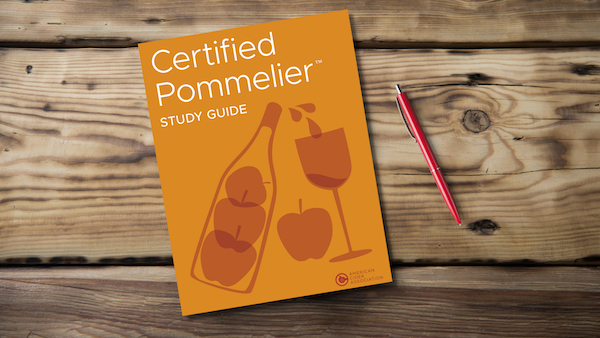
The American Cider Association is very pleased to announce the release of its new textbook for candidates preparing for the exam to become a Certified Pommelier™. Certified Pommelier™ is the second level of the ACA’s Certified Cider Professional program, the world’s most comprehensive and in-depth cider education program for beverage professionals.
“Cider is a broad and complex category,” commented ACA chief executive officer Michelle McGrath. “Our program is designed to give professionals in the beverage and hospitality industries a thorough knowledge of cider, the how and why as well as the what, empowering them to not only improve their ability to help advise customers but to create and grow whole cider programs. It is really the equivalent of any of the other well known and respected professional certification programs such as Cicerone® or the Court of Master Sommeliers. It is clear how much having those credentials can enhance someone’s career prospects, and we’re seeing that with the CCP program, too.”
The Certified Pommelier™ exam has two separate parts, one examining theory and the other a candidate’s ability to taste and accurately describe a cider. Study materials geared toward the theory portion of the exam have previously been made available through the ACA’s website, but these materials are now considered obsolete. Those interested in preparing for the exam can purchase the new textbook on Amazon.com.
You can learn more about our Certified Cider Professional Program on our website.
Thinking about studying for the exam? Join our Certified Pommelier™ Facebook group.
For more information, contact Michelle McGrath at michelle@ciderassociation.org
###
2023 Annual ACA Membership Meeting

The American Cider Association is pleased to invite our members to join us for the Annual Membership Meeting. The meeting will take place Tuesday, April 18, 2023 at 11:00 AM Pacific via Zoom.
We will review last year’s accomplishments, examine our strategic plan, and share what’s in the works for the year ahead.
We look forward seeing all of you virtually and hearing your ideas for how we can promote the US cider industry.
You must be an Active ACA Member to participate in the Annual Membership Meeting. You can join or renew your membership here.
We will provide you with the Zoom link prior to the beginning of the meeting on April 18, 2023.
Open That Cider Bottle Returns February 25
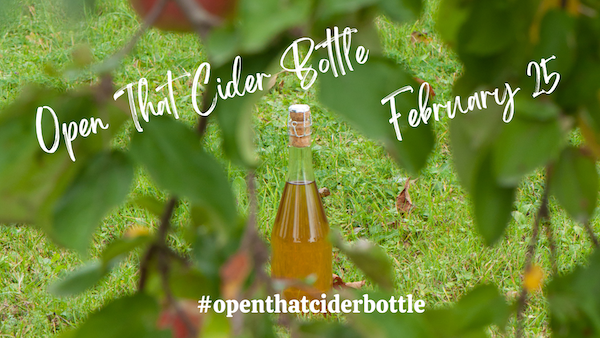
Open That Cider Bottle is back and better than ever on February 25! This year the ACA will be offering prizes for various categories and everyone who participates will be entered to win a wine (ahem, cider) suitcase. Read on to learn more about what we’re looking for and get ready to share your cider story with us!
A Little Background
Open That Cider Bottle began in 2022 when we stumbled upon Open That Bottle Night. Open That Bottle Night was started back in 2000 by two Wall Street Journal columnists, Dorothy J. Gaiter and John Brecher. Held on the last Saturday in February of each year, this day encourages folks to open up that special bottle and share memories.
While they may have been talking about wine, we know that there are a lot of special bottles of cider with great stories sitting on shelves and in cellars just waiting to be opened and have their stories told. So we’re once again asking you to open one of those special bottles and share your cider bottle story on Instagram.
Is it a bottle from the first batch you ever made? Does it have a unique apple variety that you’ve been wanting to try? A cider you stumbled upon while on vacation? A cider gift from a friend that you’ve been saving? A cider that you fell in love with the first time you tried it and had to add it to your collection? Silly or poignant, we want to hear them all and there’s a chance to win some awesome prizes!
Did We Say Prizes?
Yes, we did! Besides the aforementioned wine suitcase that all who participate have a chance to win, we will also be offering prizes to our favorites in the following categories:
- Most likely to make you 🤣
- Most likely to warm your ♥️
- Most likely to 🤯
- Most likely to make you 💲 a 🍾
So tell us and the world your cider bottle story and post it to Instagram with the hashtag #openthatciderbottle and tag us @pickcider on Saturday, February 25, 2023!
Cellar Looking Empty?
This holiday is a great excuse to support a local bottle shop. Pick up a bottle of a cider that excites you and join us in seizing the day!
2023 Cider Excellence Award Winners Announced
The American Cider Association announced the award winners at CiderCon® 2023 in Chicago

The American Cider Association (ACA) was pleased to announce the recipients of their annual Cider Excellence Awards at CiderCon® 2023 in Chicago last week. CiderCon® is the ACA’s annual conference and took place in Chicago, Illinois from January 31 – February 3, 2023 this year. The ACA established these annual awards at CiderCon® 2015 to honor individuals, businesses, and organizations from around the country for their achievements in and contributions to the U.S. hard cider industry. The highest honor given each year is the award for Significant Impact on the Cider Industry, and the ACA awarded Ria Windcaller of CiderChat and Sean and Malaika Tyson of CiderSoms these honors this year. In addition, Elizabeth Ryan of Hudson Valley Farmhouse Cider was awarded the Apple Advocate Award.
“Each year at CiderCon® we gather together as an industry and a community. It’s both an opportunity to learn and to celebrate,” says Michelle McGrath, CEO of the ACA. “The awards we give out each year reach to all corners of the industry and are an incredible way to highlight the contributions of so many.”
Part of the ACA’s mission for their awards is to celebrate the retailer and wholesaler tiers of the cider industry. Many of the awards go to restaurants, bottle shops and distributors who are doing well in their efforts to promote the diversity of the cider segment. As cider is highly regionalized and heavily dependent on local markets, most of the awards are given by region.
Each region includes the following states:
- East: CT, MA, ME, PA, NH, NJ, NY, RI, VT
- Midwest: IA, IL, IN, MI, MN, MO, OH, WI, KY
- Mountain West: AZ, CA, CO, NM, NV, UT, WY, SD, ND, KS, NE, OK, TX
- Pacific Coast: CA, HI
- Northwest: OR, WA, ID, MT, AK
- South: AL, AR, FL, GA, LA, MS, NC, SC, TN, VA, WV, MD, DE, DC
The ACA Cider Excellence Awards fall into seven categories: Best Cider Retailer Award; Best Cider-Focused Establishment Award; Best Cider Distributor Award; Outstanding Pommelier Award; Member Appreciation Award; Significant Impact on the Industry Award; and the Apple Advocate Award. With the exception of the Member Appreciation Award, Significant Impact on the Industry Award, and the Apple Advocate Award– all other awards are given to one individual or organization within each member region.
Learn more about the 2023 Cider Excellence Award winners below.
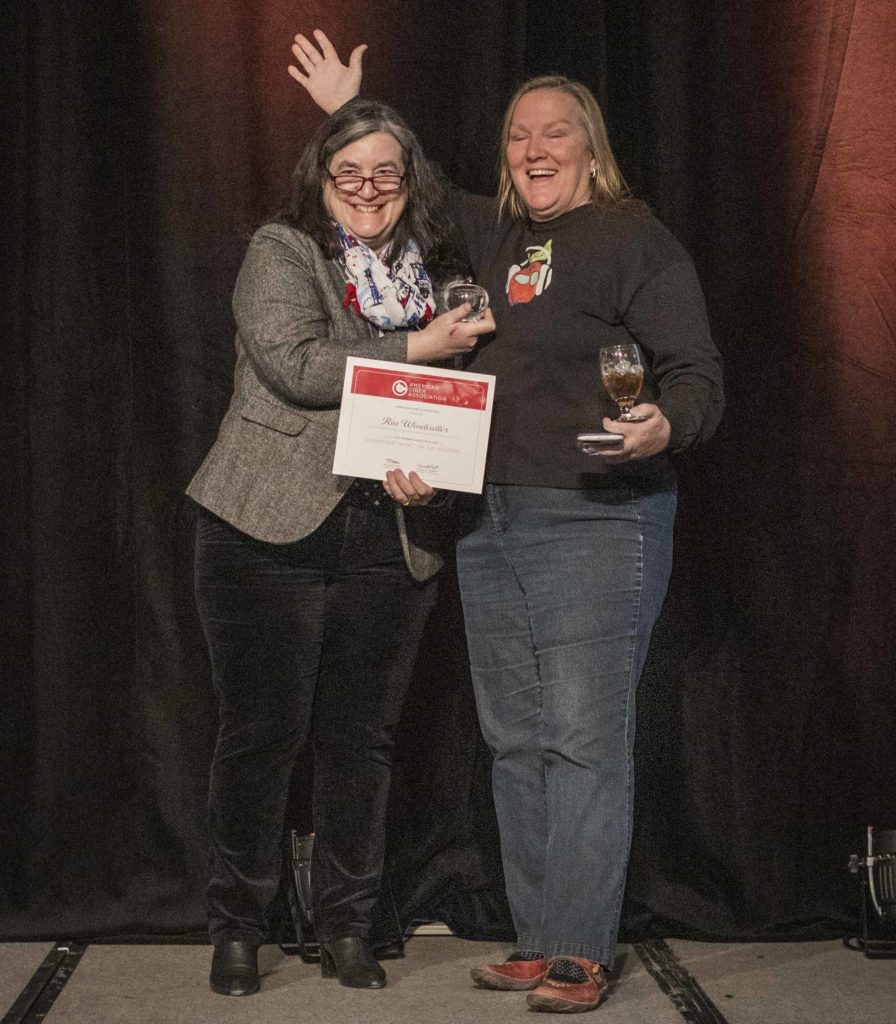
Significant Impact on the Industry | Ria Windcaller is the producer and cider emcee at Cider Chat, a weekly podcast with over 350 archived episodes with makers, cider enthusiasts, and folks in the cider trade around the world. She founded Totally Cider Tours in 2018, leading both national and international group cider tours yearly. In 2022, she produced CiderDays 2.0, a three-day event held in western Massachusetts complete with tastings, workshops, author talks, a cider pop up, cider tap takeover and a cider dinner focused on celebrating women in cider. She is also an award-winning hobbyist cidermaker and cidermaking instructor.
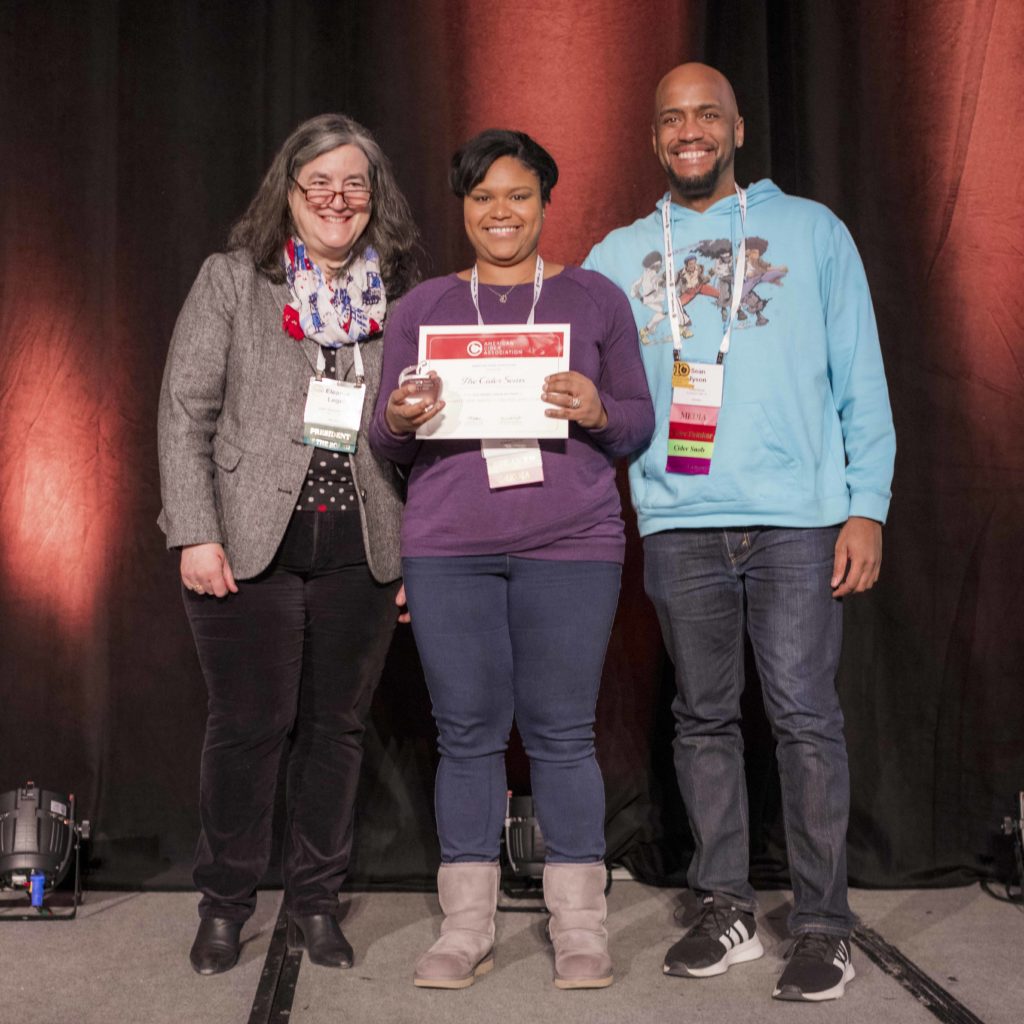
Significant Impact on the Industry |Malaika and Sean Tyson fell in love with cider in 2006 and soon after began their blog Cider Soms to introduce wine lovers to cider. Since then, they have become an integral part of the cider community through their dedicated coverage of cider and cidermakers through their blog and social media channels. In addition, they have spearheaded conversations about increasing cider’s diversity and have volunteered countless hours in support of the ACA and the cider industry.
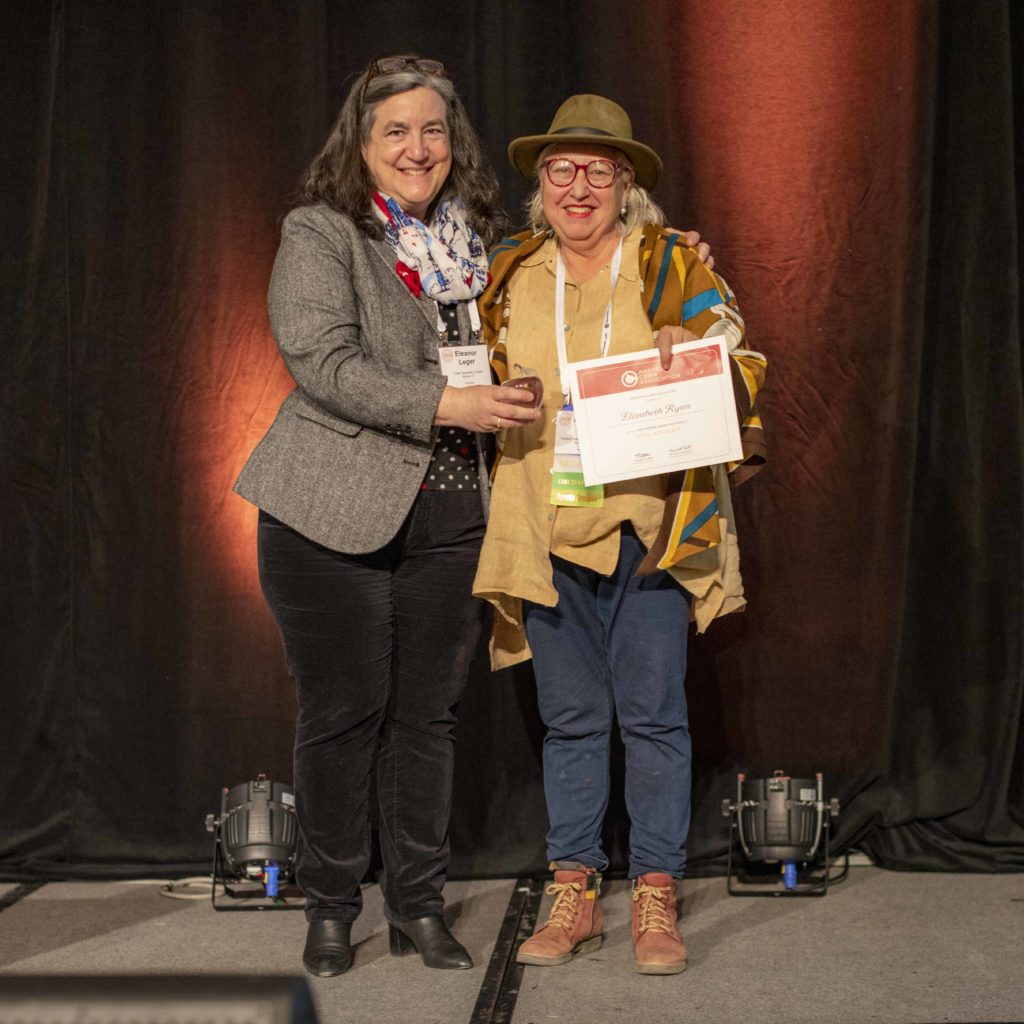
Apple Advocate | Elizabeth Ryan is the producer of Hudson Valley Farmhouse Cider. She is a renowned fruit grower and cidermaker and has studied cider making in Somerset and Hereford in England. She has a degree in Pomology from Cornell University. She made her first barrel of cider there as a student in 1980. She is one of the founding GrowNYC Greenmarket farmers. She received the Cornucopia award from Stone Barns Center for Food and Agriculture and was a Smithsonian Fellow. She was a keynote speaker at the NY State Governor’s Alcohol Summit where she pushed policy that would support small-scale hard cider production.
A full list of winners follows.
Best Cider Retailer Award (Non-Cidery Off-Premise)
- East Winner: The Cellar d’Or Wine, Cider & Spirits, Ithaca, NY
- Midwest Winner: France 44 Wines & Spirits, Minneapolis, MN
- Mountain West Winner: CRAFT Wine & Beer, Reno NV
- Pacific Coast Winner: Corner Shop, Los Angeles, CA
- Northwest Winner: Press Then Press Cider Shop, Online
- South Winner: Wine Warehouse, Charlottesville, VA
Best Cider-Focused Establishment Award (Non-Cidery)
- East Winner: Würstbar, Jersey City, NJ
- Midwest Winner: Taproot Cider House, Traverse City, MI
- Mountain West Winner: Scion Cider Bar, Salt Lake City, UT
- Pacific Coast Winner: Alma’s Cider & Beer, Los Angeles, CA
- Northwest Winner: The Place PDX, Portland, OR
- South Winner: Firefly, Charlottesville, VA
Best Cider Distributor Award
- East Winner: Coeur Wine Co., New York
- Midwest Winner: Craftroads Beverage, Indiana
- Mountain West Winner: Ibantik Craft Beverages, Utah
- Pacific Coast Winner: Lime Ventures, California
- Northwest Winner: Maletis, Oregon
- South Winner: Specialty Beverage, Virginia
Outstanding Pommelier Award (Bartender, Retailer or Distributor Representative)
- East Winner: Paige Flori, Boutique Wine, Spirits, and Ciders, Fishkill, NY
- Midwest Winner: Melissa Waskiewicz, France 44 Wines & Spirits, Minneapolis, MN
- Mountain West Winner: Matthew Ostrander, Ibantik Craft Beverages, Utah
- Pacific Coast Winner: Olivia Maki, Redfield Cider Bar & Bottle Shop, Oakland, CA
- Northwest Winner: Jonathan Chambers, Capitol Cider, Seattle, WA
- South Winner: Matthew McCallister, Potter’s Craft Cider, Charlottesville, VA
Member Appreciation Award
- Schilling Hard Cider, Portland, OR
- Awarded for their support of CiderCon® and invaluable cider networking
- Yonder Cider, Wenatchee, WA
- Awarded for their leadership with our equity and inclusion programming
- South Hill Cider, Ithaca, NY
- Awarded for their leadership with our educational programming and regional ambassadorship
Significant Impact on the Industry Award
- Malaika and Sean Tyson, The Cider Soms
- Awarded for spearheading conversations about improving cider’s diversity, for promoting cider through their blog, and for being tireless volunteers
- Ria Windcaller, Cider Chat Podcast
- For creating a source of learning and a space for storytelling in the cider community with her podcast since 2015
Apple Advocate Award
- Elizabeth Ryan, Hudson Valley Farmhouse Cider
- For telling the stories of New York apples, for growing apples, for being a pioneer orchardist and cidermaker
Further information, media interviews, award recipient bios and photos available upon request. Please contact Michelle McGrath at michelle@ciderassociation.org.
About the American Cider Association
The American Cider Association is an organization of cider and perry producers in the United States. It gathers and shares information about cider production, regulations and cider apple growing to help members improve their operations, raise awareness and advance cider in the market. The organization was founded in February 2013. Learn more at ciderassociation.org.
###
Meet Your 2023 Board of Directors

The American Cider Association is pleased to announce the results of this year’s board elections. Congratulations to new board members Sarah Hemly and Breanne Heuss, and welcome back returning board members Dave Takush, Philippe Bishop, Marcus Robert, Talia Haykin, and John Behrens.
The board also re-elected Eleanor Leger as Board President, Brooke Glover as Board Vice President, Dave Takush as Board Secretary, and John Behrens as Board Treasurer.
Visit our About Us page to learn more about all your American Cider Association board of directors.



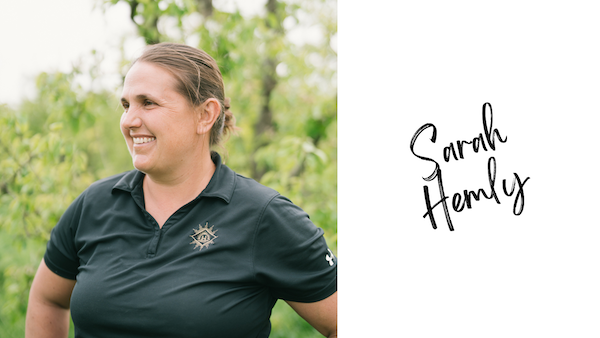



CiderCon® 2023 Fact Sheet
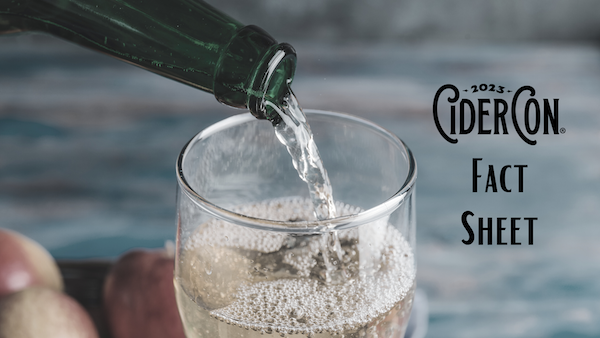
- The 13th annual CiderCon® was held in Chicago, Illinois from January 31 – February 3, 2023, celebrating a return to Chicago after a four year absence.
- 965 people registered for CiderCon 2023, including attendees, vendors, volunteers and speakers.
- Attendees were from 40 different states including Alaska and Hawaii.
- New York had the most registrants followed by Michigan, Illinois, California, Washington, and Virginia.
- Attendees from 9 different countries participated in CiderCon®, including Austria, Canada, France, Guam, Ireland, Korea, New Zealand, Sweden, and the United Kingdom.
- The ACA welcomed keynote speaker Sunny Gandara, former Global Wine Director for the Mathew Kenney Restaurant Group and the founder and owner of The Plant Curious Table, a digital dual-purpose education and wine consulting company, to CiderCon® 2023. Her talk explored vegan market growth and trends, who plant-based consumers are, why cider is perfect for this growing group, and how to market to these consumers.
- There were 38 educational sessions held during CiderCon® covering topics in the areas of Better Business, Cider Production, Branding, Marketing & Sales, Orcharding, and Apples, Flavor & Terroir. The Cider Institute of North America helped to develop the cider production track sessions once again. The schedule can be downloaded HERE.
- There were 12 tasting sessions, including a traditional perry tasting with Claude Jolicoeur, author of the recently released Cider Planet and of The New Cider Maker’s Handbook, which has been acclaimed worldwide as a major reference on the topic of cidermaking. Other tasting sessions included orchard trials from New York state, sensory analysis sessions, and sessions addressing pet nat cider, carbonation, blending, and spontaneous fermentation.
- There were several data driven sessions featuring speakers from the National Beer Wholesalers Association, Market Technology, Sovos ShipCompliant, 3 Tier Beverage, CGA Strategy, and Good Beer Hunting.
- Mary Guiver of Whole Foods Market Inc and Mark Venegoni of SpartanNash joined CiderCon® 2023 on our retail panel discussing how to create positive relationships with chain retailers.
- The ACA once again offered its Certified Pommelier™ exam at CiderCon® 2023. The Certified Pommelier™ is an advanced second level designation of the ACA’s Certified Cider Professional program geared toward beverage and hospitality industry professionals. Close to 40 people sat for the challenging test that includes a blind sensory evaluation section. The new cohort of Certified Pommeliers™ will be announced in 6 weeks.
- About 150 individuals participated in tours for CiderCon® 2023, including tours featuring Chicago’s cider scene, an historical tavern tour, a Frank Lloyd Wright architecture and cider tour, and a tour of the Bronzeville neighborhood, beloved as a center for African-American life and culture in Chicago.
- There were numerous networking opportunities, including a Newcomer Networking session, a BIPOC Cider Professional Meetup, a Pomme Pride Meetup for LGBTQIA+ cider industry professionals, and an Orcharding Meetup.
- The TTB and the FDA both held sessions at CiderCon® 2023 and were available to attendees to answer questions regarding topics ranging from labeling to licensing to recipes.
- The Trade Show sponsored by FruitSmart featured 92 vendors from around the country and the world, and featured several new vendors as well as many who have returned year after year to support the cider industry.
- The American Cider Association’s annual board elections happen concurrently with CiderCon®. Newly elected board members were announced during lunch on Friday. New board members welcomed are Sarah Hemly of Hemly Cider as Pacific Coast Chair and Breanne Heuss of Golden State Cider, and newly re-elected board members are Dave Takush of 2 Towns Ciderhouse and Philippe Bishop of Alpenfire Cider, both to At-Large Seats, Marcus Robert of Tieton Cider Works as Northwest Chair, Talia Haykin of Haykin Family Cider as Mountain West Chair, and John Behrens of Farmhaus Cider as Midwest Chair.
CiderCon® 2024 will be held in Portland, Oregon from January 16-19, 2024.
CiderCon® was created to offer the commercial cider industry an outlet to meet, share ideas, collaborate and affect positive changes in cider making and cider fruit production best practices, the cider market and cider regulations. CiderCon® is organized by the American Cider Association whose mission is to grow a diverse and successful U.S. cider industry by providing valuable information, resources and services to our members and by advocating on their behalf.

CiderCon® Demographics and Inclusion Dashboard
Over the last couple years, the ACA’s Antiracism, Equity and Inclusion committee has focused its efforts on expanding CiderCon®’s audience through inclusive practices for attendees, speakers, and media. A new CiderCon® Demographics and Inclusion Dashboard has been developed as part of the ACA’s efforts to set goals and measure progress toward becoming a more inclusive and representative industry. By measuring demographic and community engagement data, we are holding ourselves accountable to trackable and transparent improvement. This dashboard is reliant upon self-reported data from CiderCon® industry surveys and statistical information gathered by the ACA.
The U.S. is increasingly multiracial and cider needs to ensure it is a safe and inclusive community to grow with the country’s demographics. Research shows that diversifying ownership is a pathway to diversifying customers. CiderCon® is an excellent opportunity for new cider professionals to learn about the industry, so we are prioritizing making CiderCon® more representative of the U.S. population as a whole.
We anticipate the dashboard to evolve with time, and we welcome suggestions for improvement.
2023 ACA Board Candidates

The 2023 ACA Board Elections are around the corner. If you have an active and current membership with the ACA and you are a bonded active cidery, we will email the principal contact as they are designated on your account with an electronic ballot on Thursday, February 2, 2023. Please read below to meet the 2023 candidates for the ACA Board.
Midwest Chair:

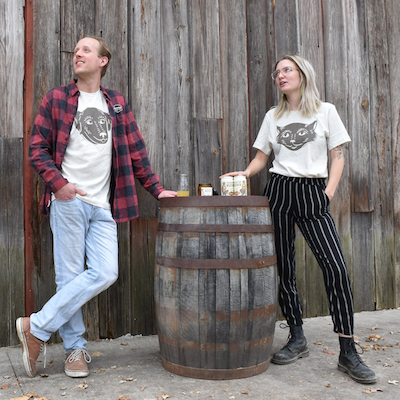
Candidate Statement: My goal and the number one priority for the ACA is to help cideries sell more cider. This needs to be accomplished using a variety of strategies. These include providing educational opportunities to continuously improve the overall quality of cider in the marketplace and encouraging new faces to join the industry, promoting the diversity of cider and cider styles so consumers realize there is a cider for everyone, engaging with media to promote what makes cider unique and working with elected officials and agencies to create and promote common sense legislation that is fair and reasonable.
I am proud of the work of everyone on the current board and I look forward to continuing that work. I am also proud of my work as Treasurer to put the ACA back on a path of financial sustainability, creating our first reserve fund to help us better weather future economic downturns and approach those situations from a position of offense. My goal is for that to continue to ensure the long term viability of the organization.
About John: John Behrens is the Founder and President of Farmhaus Cider Company located in Hudsonville, Michigan. This company was founded in 2015 and has gone on to win many national and international accolades and awards. John began his first term as President of the Michigan Cider Association in 2018. Previously, he worked as a Certified Public Accountant for over 10 years at BDO USA and Steelcase. John holds an MBA from Grand Valley State University, in addition to degrees in Accounting and Finance.
Mountain West Chair:


Candidate Statement: Serving on the ACA board since 2020 has taught me so much about the broader cider industry and cider legislation. I have enjoyed learning how impactful the work that the ACA has done is on cideries of all sizes. I also enjoy being a conduit for the Mountain West Region – both sharing the work the ACA does with member cideries and communicating the unique needs of Mountain West cideries to the ACA. I see such a huge value in coming together as a group and advocating for what we need and want. And that generally starts with the apples. From recognition of different varietals and their unique flavor profiles, to terroir and its impact on cider, to harvest dates and transparency of what we’ve put in the bottle and where it came from. Teaching consumers the value of learning more about their regional apples and cidermakers, is a passion of mine. I can’t wait to keep working with the ACA to promote cider making, cider drinking, and apple literacy.
About Talia: In 2017 Talia, along with her husband Daniel, founded Haykin Family Cider in Colorado. Their cider journey began in 2013 as hobbyists in their living room. As they learned more about the rich history of apples and hard cider in the United States their cider became strongly focused on single varietals and family farms with whom they have personal relationships. In addition to her work with their cidery, which encompasses all business areas, Talia is a Denver-based writer and social media strategist. She formerly was the CMO of large non-profits and worked as a freelancer, prior to managing the cidery (and family) full-time. Talia lives in Denver with Daniel, their three children (who fight over who gets to ‘run the cider house’ one day), and their fluffy pup Soba Schnoodle.
Northwest Chair:

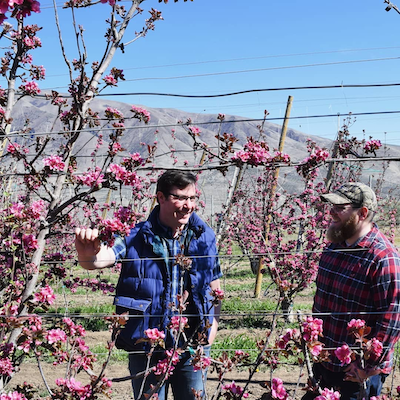
Candidate Statement: The American Cider Association’s mission is to provide valuable information, services, and resources to its members as well as advocate on their behalf. The organizations work has helped the cider industry grow by guiding legislation to reduce taxes and streamline governmental processes, providing vital industry statistics to our members and industry partners, and taking the lead as a voice in all corners of our market. During my time on the Board of Directors I have served on the legislative, membership, and finance committees, as well as serving as Treasurer on the Executive Committee. During my time as treasurer, I helped lead the organization through the toughest financial situation we have ever faced. Now, seemingly on the other side, I’m ready to help keep building the organization to better serve our members and the cider industry.
About Marcus: Marcus grew up on a family orchard, which he still owns and operates in the Yakima Valley. He owns and operates a winery with his wife Amy and has been involved in the beverage business for 20+ years. Marcus is the Cider Maker, President, and Co-owner of Tieton Cider Works where he has helped grow the company for the past 12 years.
Pacific Coast Chair:

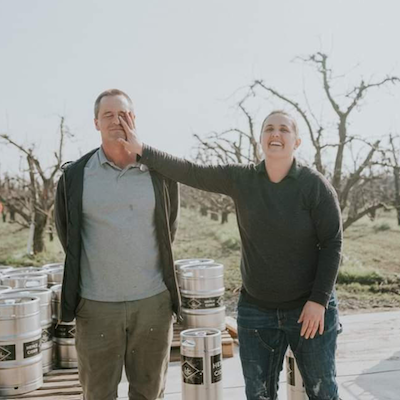
Candidate Statement:
My name is Sarah Hemly and I’m President of Hemly Cider in Courtland California (An enormous town of over 140 people just south of Sacramento). In 2015 I co-founded Hemly Cider with an intent to showcase the fruit coming out of our families sixth generation pear and apple orchards. Our passion has been a focus on Perry, and I’d love the opportunity to bring another “pearspective” to the board.
My primary interest in joining the board as the Pacific Coast representative stems from a desire to strengthen the relationships and opportunities between cider and commercial agriculture. The past few decades of exposure to the family business of agriculture has offered me the amazing opportunity to learn about and work with some amazing farmers and diverse crops in our state. I’ve had the privilege to be able to travel and meet farmers through the IFTA (International Fruit Tree Association) and take some side trips to visit cider makers both domestically and globally. From San Diego, down to Tasmania, Germany, Spain, and Tennessee, I’ve seen the importance of growing the cider industry’s connection to commercial agriculture as well as the opportunity cider offers in return.
In California, over the past few years, we’ve seen pear and apple crops become the most expensive crops grown in the state. Coupled with canneries leaving, increases in costs of labor, land, water and added regulations, margins have shrunk while costs continue to rise. This in turn has affected costs of and access to juice for the cider industry. I think we all see potential in the cider industry as a “home” for high-quality culled fruit and seconds as well as an opportunity to convert dessert variety blocks to cider-specific varieties with the potential of reduced costs and increased margins to both farmers and the cider industry as a whole. I look forward to any opportunity to contribute to your organization and would be honored to be the ears of the board for the cideries in the Pacific Coast Region, so we can continue supporting the region appropriately.
About Sarah: In 2015 Sarah launched Hemly Cider with Co-Founder Chris Thomson. With help from her Tasmanian Business partner, Sarah built and grew Hemly Cider into an award-winning cider company that showcases the fruit grown by the family’s sixth generation pear and apple orchards. As the company has grown, the focus has shifted to include fruit from multiple California crops. Previous to Cider, Sarah earned a degree in Landscape Architecture from the University of California Berkeley. After spending 8 years in architecture and project management, she left the field and now serves full time as President of Hemly Cider as well as on the board of Greene and Hemly, the family orchard and packing company.
At Large Cidery Seat

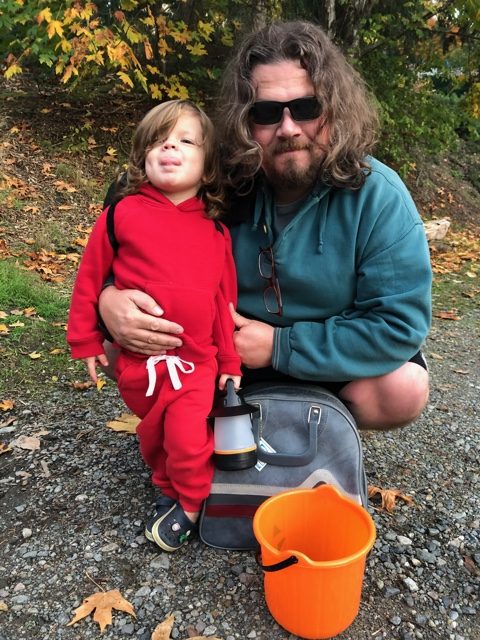
Candidate Statement: I believe that the American Cider Association (ACA) is very good operating as a megaphone for the U.S. cider industry. This does not happen with out good leadership and a diverse board of volunteers willing to lend their time, discuss issues, share stories and help steer the industry to a place where we can all succeed. My voice comes from the perspective of a very small family run cidery, making under 5,000 gallons a year, growing traditional cider fruit in a maritime climate and trying to sell primarily large format bottles of harvest driven cider in a market that is heavily influenced by the beer world. Not the easiest thing to do, but being able to share this voice with the board members and help steer our decision making for producers like us is why I do it.
I wanted to take a more in active role in shaping the cider industry and was elected to the ACA board in 2020, previously serving on the board of the Northwest Cider Association. I have worked on multiple committees in the past 3 years including the Cider Market Data, Cider Marketing and Lexicon/ CCP as well as co-organizing regional cider maker industry socials the last one with well over 100 cider professionals from 3 states. My main goal is to help educate distributors, trade professionals, and consumers of the intricacies of cider. Not all cider is the same and cannot be presented in the same way. I bring experience from the perspective of owning a small company, spending most of my time on the sales side and having worked for a small craft distributor where I saw the frustration and challenges from both the sales rep and producer perspective. With proper tools, training and education, we can increase cider appreciation helping individual producers sell more cider and the cider industry as a whole. I look forward to continue working toward this goal collectively with Michelle, my fellow board members and everyone who has volunteered their time to committees.
About Philippe: I am a co-owner of Alpenfire Cider in Port Townsend, WA where I was raised. Some of my earliest memories are playing under ancient apple trees, that smell will be with me forever. After bouncing through many different jobs including wildland firefighter, commercial photographer, house salvage and deconstruction, to running the operations for a craft beverage distributor I fell in love with cider, following my folks foot steps. I primarily handle the sales and education side of things, but with any small company I wear many hats. Whether it is pruning or picking apples in our small cider orchard to washing tanks to blending cider in the production room that’s my life now. I live in Seattle, WA with my wife and kids Sierra and Cortland, enjoying a fine beverage or two with friends or hiking deep in the woods when I can find the time.
At Large Cidery Seat

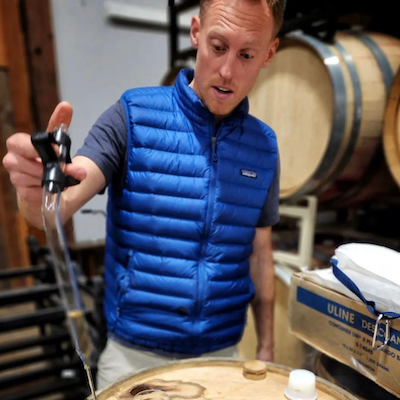
I am so darn excited to be running for the member at large ACA board position. As a board member I intend to help promote positivity and unity within the cider community. I will focus my efforts on encouraging legislative initiatives that will bring positive change for all industry members.
About Dave: Dave Takush is the Head Cidermaker and co-owner of 2 Towns Ciderhouse. Dave earned a Master’s Degree in fermentation science at Oregon State University and has almost over a decade of experience in the craft beer, wine and cider industries. His passion for fermentation led him to join two childhood friends in starting 2 Towns Ciderhouse in Corvallis, Oregon. Now one of the largest craft cider producers in the nation, 2 Towns has over 100 employees and is dedicated to producing quality craft cider from 100% fresh-pressed Pacific NW apples. Dave is also a board member of the Cider Institute of North America.
Large Cidery Seat:


Candidate Statement: While on the ACA board, I want to create more brand awareness of the cider industry; help create guidelines for consumer-facing messages across the category and share the benefits cideries bring to the environmental communities around them. It’s important for the cider industry to become a key player in the beverage category.
I’d love to create more structure regarding how cideries promote fruit-based ciders, the definition of fresh-pressed, and how we talk about additional wellness benefits with consumers. As more consumers today seek “better for you” alternatives it’s important for us as an industry to set the standards of what consumers can expect when they purchase cider. I believe my expertise in brand marketing and leveraging emerging categories will help the ACA extend its influence with key government agencies, companies, and distributors across the US. All the while we continue to evolve as a major industry player within the beverage category.
About Breanne:
Breanne Heuss is a brand marketing leader with a reputation for identifying emerging consumer trends and market opportunities, launching first-to-market products, and establishing early market dominance across multiple beverage categories. With more than a decade of branding experience in the beverage industry, she has worked on everything from established national wine brands including Sutter Home Family Vineyards and FRE Alcohol-Removed Wines to developing new brands within the low/no alcohol space. Breanne currently serves as the Marketing Director for Golden State Cider and Seismic Brewing Company overseeing the marketing department driving new consumer acquisition, new brand development, and growth within direct-to-consumer channels.
Born and raised in California, she is happy to combine her love for supporting local agriculture with brands that expand consumer occasions and experiences. Breanne is enthusiastic about cider-making and looks to bring more Millennial and of-age Gen Z consumers into the cider category. She is excited to make this wonderful beverage a staple in every household.

